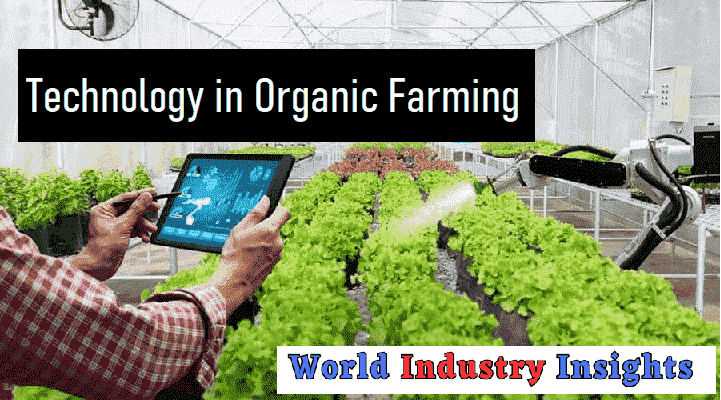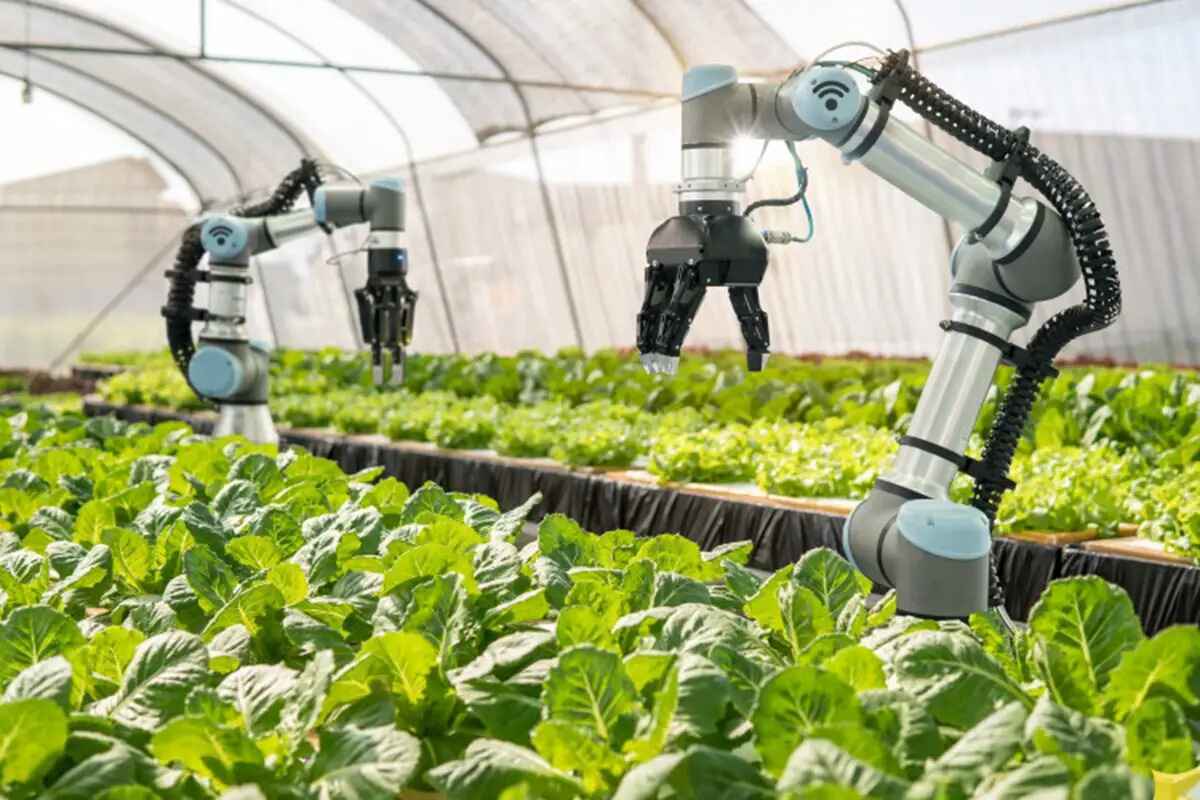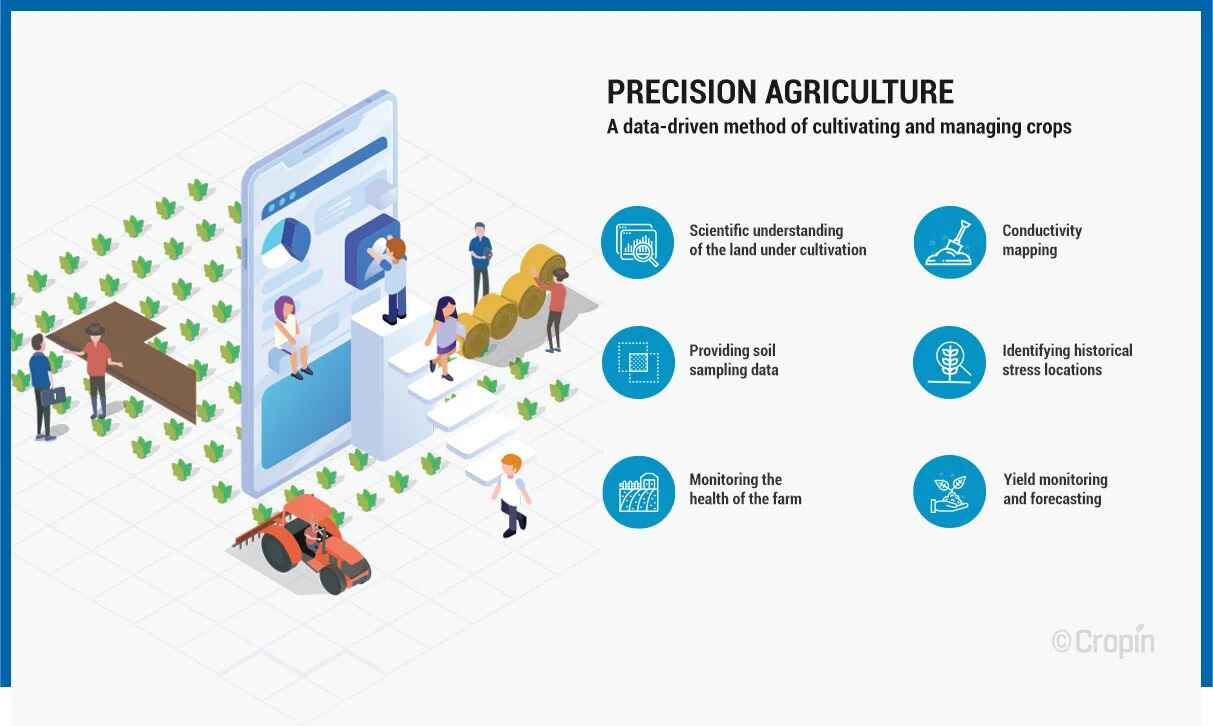Technology in Organic Farming: Organic farming, a paradigm that prizes natural, chemical-free methods, has long held significant importance in our food production. Advocating for environmentally sound practices, it strikes a balance between ecology, health, and fairness. However, the arc of technological advancement has inevitably intersected with this arena, revolutionizing organic farming in ways hitherto unimaginable.
Farm Management Systems
Farm management systems have emerged as a potent arsenal in the toolkit of an organic farmer. These digital platforms offer a comprehensive overview of farm operations, aiding farmers in managing their resources optimally.
The boon of such systems is multi-fold. They automate administrative tasks, facilitate data-driven decision-making, and ensure transparency. Features may include real-time data capture, predictive analytics, and resource management tools.
Notably, the use of such systems has resulted in significant success stories. For example, Holistic Management International’s Whole Farm Planning has shown positive impacts on organic farm yields and sustainability.
Internet of Things (IoT) in Organic Farming
The Internet of Things, colloquially IoT, has burgeoned as a critical force in organic farming. It refers to the network of physical devices embedded with sensors, software, and connectivity, allowing data exchange and analysis.
IoT devices like soil moisture sensors and weather prediction devices are transforming farming practices. For instance, they assist in optimized irrigation, preventing over-watering or underwatering of crops. Indeed, the advantages of IoT are plentiful. They enhance productivity, ensure efficient resource use, and facilitate early warning systems for disease or pest control.
Big Data Analytics for Yield Optimization
Big data analytics has rapidly found relevance in organic farming. It refers to the process of extracting meaningful patterns from vast data sets. For organic farmers, this entails collecting and analyzing data for improved crop yield.
Predictive modeling and data-driven decision-making are key components of big data analytics in farming. By harnessing real-time and historical data, farmers can optimize yield, streamline operations, and mitigate risk. Numerous case studies, like the implementation of IBM’s Watson Decision Platform in agriculture, underscore this potential.
Robotics and Automation
Organic farming is no stranger to robotics and automation. These technologies provide an array of applications, from precision planting to automated weeding, which mitigate labor-intensive tasks. Drones and aerial imagery further augment this portfolio. By capturing high-resolution images, drones can monitor crop health, identify disease hotspots, and map soil variation.
Robotics and automation also serve a dual benefit: enhancing efficiency and reducing labor costs, thereby making organic farming more economically viable.
Precision Farming Techniques
Precision farming, which involves precise application of inputs like water and nutrients, finds immense relevance in organic farming. GPS technology plays a critical role here, helping map field variability and guide machinery.
Variable rate technology (VRT) and sensor technology offer optimized resource management. VRT allows differential application of inputs, while sensors provide real-time monitoring of nutrient and water levels.
Vertical Farming and Controlled Environment Agriculture (CEA)
Vertical farming and Controlled Environment Agriculture (CEA) denote growing crops in vertically stacked layers or controlled environmental conditions. They offer immense potential in organic farming, allowing year-round production without geographical constraints.
Techniques and technologies like hydroponics and aeroponics are commonly used in these systems. Case studies, such as AeroFarms in Newark, New Jersey, illustrate the successful implementation of vertical farming in organic production.
Aquaponics and Hydroponics
Aquaponics and hydroponics, systems that grow crops without soil, have proven complementary to organic farming. They offer advantages like water efficiency and spatial optimization.
However, these systems are not without challenges. For instance, nutrient management can be a major hurdle. Yet, several enterprises, like Green Spirit Farms in Michigan, have successfully integrated these systems into their organic operations.
Biotechnology in Organic Farming
Biotechnology, a field that manipulates living organisms for human benefits, has been instrumental in organic farming. Genetic engineering provides organic crop improvement, while biopesticides and biofertilizers offer organic pest and disease management solutions.
Despite the advantages, public perception and ethical considerations form a complex aspect of biotechnology in organic farming. Nevertheless, its role in ensuring food security and sustainability cannot be discounted.
Blockchain Technology for Supply Chain Transparency
Blockchain technology, a digital ledger technology, holds relevance in organic farming. It ensures transparency and traceability in organic food supply chains, enhancing consumer trust and combating fraud.
Blockchain applications extend to certification and labeling of organic products. An example is Provenance, a blockchain platform that provides supply chain transparency, thus verifying the authenticity of organic products.
Emerging Technologies and Innovations
The tech frontiers of organic farming are continually pushed by innovations like nanotechnology, AI, and machine learning. Nanotechnology holds promise in areas like smart delivery of pesticides, while AI and machine learning can predict crop yields and optimize farm operations.
Futuristic concepts like vertical gardens and robotic pollinators are also paving their way into the organic farming landscape, signaling an exciting new chapter in this field.
Challenges and Limitations
Despite the strides, challenges persist in implementing technological advancements in organic farming. These encompass regulatory hurdles, economic considerations, and the need to balance sustainability with technology. However, such impediments provide fertile ground for innovation and adaptation.
Future Outlook and Conclusion
As we look to the future, it is clear that technology’s role in organic farming will only continue to burgeon. The potential benefits and opportunities for organic farmers are vast. Continuous innovation and adaptation will be the hallmarks of this sector, as it works towards a sustainable and food-secure world. In conclusion the transformative potential of technology in organic farming is undeniable. While it is a complex, evolving relationship, it undeniably holds the promise of a brighter, greener future.
FAQs
Q1. What is organic farming?
Organic farming is a method of agriculture that relies on natural processes and substances, eschewing synthetic pesticides, genetically modified organisms, and chemical fertilizers.
Q2. How does technology benefit organic farming?
Technology offers numerous benefits to organic farming, from improving yield and efficiency to enhancing sustainability and traceability in the supply chain.
Q3. What is the role of IoT in organic farming?
IoT, or the Internet of Things, includes devices with sensors and software that collect and analyze data, aiding in tasks such as soil moisture monitoring and weather prediction for optimized farming practices.
Q4. How does big data analytics optimize yield in organic farming?
Big data analytics involves collecting and analyzing vast data sets to extract meaningful patterns, allowing for data-driven decisions and predictive modeling to optimize crop yields.
Q5. What are some challenges in implementing technology in organic farming?
implementing technology in organic farming faces hurdles such as regulatory and certification complexities, economic considerations, and balancing technological interventions with sustainability.
Our Reader’s Queries
Is technology used in organic farming?
Innovative technology is being embraced by organic farmers to enhance their farming practices. Unlike conventional farming methods that rely heavily on pesticides, herbicides, and fertilizers, organic farming utilizes alternative techniques that are more sustainable. While these methods may require more time and labor, they are worth the effort as they promote healthier soil, water, and air quality. Organic farming is a viable option for those who prioritize environmental sustainability and the health of their consumers.
What are 4 examples of farm technology?
Modern agriculture has come a long way with the use of cutting-edge technologies like robots, temperature and moisture sensors, aerial images, and GPS systems. These advanced tools and precision farming techniques have revolutionized the industry, making it more profitable, efficient, and eco-friendly. With the help of these sophisticated devices, businesses can now operate with greater safety and precision, ensuring a better future for both farmers and the environment.
What are the techniques used in organic farming?
To ensure healthy and sustainable crops, farmers employ various practices such as crop rotation, building soil organic matter through cover crops and compost, and selecting disease-resistant plants. They also scout for insect and disease pests, use trap crops, and dispose of diseased crop residue properly. These techniques not only promote better yields but also protect the environment and reduce the need for harmful pesticides.
What machines are used in organic farming?
Organic farmers rely on a variety of tools to cultivate their crops. From cultivators and camera guidance systems to tine weeders and rotary hoes, these tools help farmers maintain healthy soil and promote plant growth. Other popular tools include flame weeders, weed zappers, air seeders, and chisel plows. By utilizing these tools, organic farmers can ensure that their crops are grown in a sustainable and environmentally-friendly manner.



